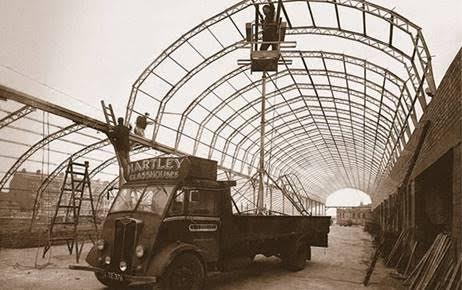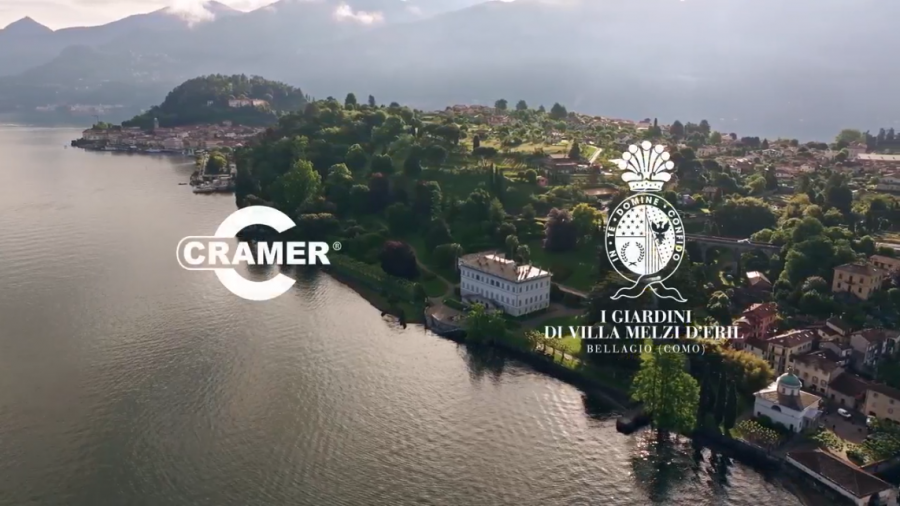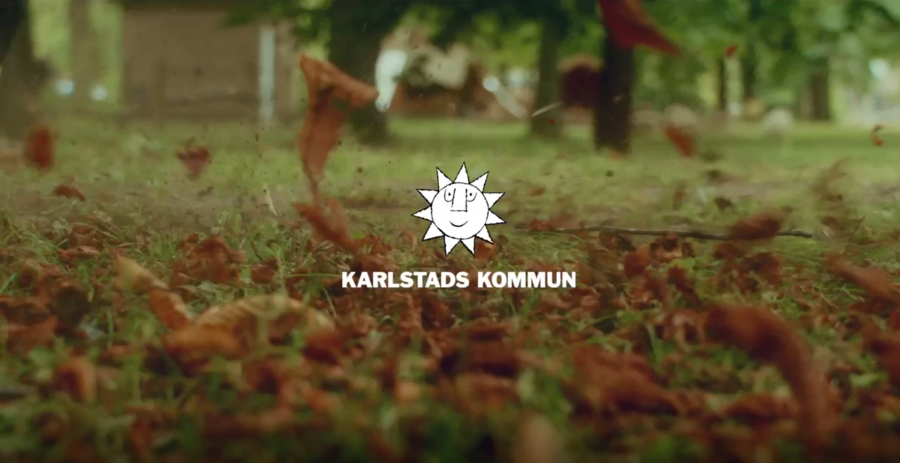To celebrate 80 ‘trusted years,’ British greenhouse and glasshouse manufacturer Hartley Botanic has unveiled a ‘provenance and history’ themed trade stand at RHS Chelsea this year which provides a snapshot into the incredible stories and plant hunter origins behind some of our best loved and most familiar plants. Designed and planted by RHS winning Lee Burkhill ‘the Garden Ninja,’ with landscaping by award winning G.K. Wilson landscape services, the stand celebrates the fearless work of ‘orchid hunters’, the passion and ambition of Victorian plant collectors and the pivotal scientific discoveries which came about through botanical study.

The stand’s provenance and history theme has been inspired both by the increasing importance of thoughtful plant sourcing as a way to control quality and stop the spread of disease, and by its central importance in Hartley Botanic’s own story – for 80 years the company has been making its beautiful, handmade aluminium greenhouses from the same Lancashire factory, beneath the base of the dramatic Pennines’ Chew Valley.
Provenance continues to be a subject of key importance and concern for the food industry and it is growing in momentum as an issue to take seriously within the horticultural sector. There is an increasing commitment to support UK plant production as a means to stop the spread of plant pests and diseases and this year, the RHS has banned some high-risk plants from the flower show. The use of chemicals is also a key argument in the battle for more responsible and informed plant sourcing with studies showing some plants for the domestic market contain the same levels of neonicotinoids as agricultural crops. Industry experts are also more vociferously encouraging consumers to use independent growers and nurseries. The Hartley Botanic stand will encourage visitors to discover more about where plants come from, allowing this to inform their own gardening at home. Where possible, all plants on the stand have been grown and sourced in the UK.
Of the stand Tom Barry, Managing Director of Hartley Botanic said; “Our 80th anniversary is a time of celebration but is also an opportunity to speak to customers of our company’s heritage and back story. While our greenhouses and glasshouses look very beautiful and enticing on our stand, it is Hartley Botanic’s long history and our products’ provenance which points to their quality and uniqueness. This is what we wanted to communicate through our stand, mirroring our heritage message with the history and stories behind plants as prosaic as the humble pea. We hope it will give gardeners an even greater appreciation of the plants they already love and encourage them to interrogate new additions to their garden – not just according to look or personal taste but also according to their provenance.”
Garden designer Lee Burkhill of The Garden Ninja added; “It's a great honour to have been chosen by Hartley Botanic as the designer for their 2018 stand at the Chelsea Flower Show. Working with Gareth Wilson of G.K. Wilson Landscape Services, who have been taking the RHS Show Garden category by storm over recent years, is really exciting for an up-and-coming designer like me. Gareth and I will be looking to ‘break the mould’ this year with our combined design energy and plant enthusiasm. Taking inspiration from the plant explorer stories, the design will showcase the history of UK garden planting in an immersive and arresting way, paying homage to those who risked it all for our gardening pleasure.”
Stand overview and external plantings
The Hartley Botanic stand’s history and provenance theme features four of its handmade greenhouses and glasshouses, a modern Opus glasshouse, a Victorian Lodge, a traditional Grow and Store and a contemporary Hartley Planthouse, each with an intricate and striking display, telling an individual and compelling botanical history story. Beautiful greenhouses in stylish green, grey, stone and bronze colours are surrounded by woodland-styled external plantings which provide a soft exterior. Woodland style plants including Thalictrum, Anthriscus and Actea provide an intriguing backdrop whilst the likes of Achillea, Waldsteinia and Nepetain mellow yellows and oranges, planted in staggered heights, give enticing views through to each of the greenhouses. These natural-looking exterior plants are the unsung heroes of woodland canopy planting and thrive in the UK’s climate. The stand also features a special edition Hartley Botanic Patio Greenhouse in ‘ruby red’ to mark the manufacturer’s 80th anniversary.
‘Orchid hunters’ - Hartley Botanic modern Opus glasshouse
A bronze coloured Opus glasshouse, the most modern and contemporary structure on the stand, is filled with a variety of orchids including Phalaenopsis, Dendrobium and Epidendrum, all shown in their natural growing state as epiphyte plants. The orchids, in pretty ‘sweet shop’ colours, bely the gruesome history behind the Victorian race to bring them to the UK, referenced in the historic plant explorer equipment displayed alongside. Orchids, although commonplace now, would have been incredibly exotic in the early 1900s and represent the legacy and personal sacrifice of British orchid hunters such as William Arnold, David Bowman and Gustavo Wallis who died in the pursuit of bringing this species to the UK. Orchid hunting began following their discovery in 1818 by William John Swainson when collecting plants in Rio de Janeiro. The orchids, which bloomed on their arrival into the UK, astonished Londoners with their unusual shape and colours, triggering ‘orchid fever.’ The orchid hunters who travelled to the Philippines, Papa New Guinea and Columbia as a result were subject to treacherous and dangerous journeys. They faced tropical diseases, wild animals and aggressive natives, not to mention fierce competition from their peers, and some disappeared without a trace.
‘Fern Fever’ - Hartley Botanic Victorian Lodge
A Hartley Botanic Victorian Lodge in Olive Leaf, the largest glasshouse on the stand, has been transformed into a fernery, an archetypal image of Victorian botany when Pteridomania (or Fern-Fever) swept the nation and glasshouses were commonly used to protect ferns from the air pollution of 19th century London. The lush interior, filled with cool, architectural ferns has a refreshing feel, providing respite from the bustle of the show. Container-grown ferns spill out from white washed terracotta pots and organic looking hessian planters. The Victorian fashion for fern hunting and collecting swept the UK from the late 1830s when the countryside, and improved railway infrastructure, attracted increasing numbers of amateur and professional botanists. There was a race to discover and name new and unusual species, as they had been less studied than flowering plants. For some it was a serious scientific pursuit and others it was a fashionable hobby which united the social classes and informed much decorative art during the period. Aside from the reminder of a botanical trend which inspired the imagination of an entire nation, fern fever is also a history lesson in species conservation, as the zeal of Victorian collectors led to significant reductions in wild populations of rarer species.
How the pea influenced modern genetics – Hartley Botanic traditional Grow & Store
At one level, the Hartley Botanic Grow & Store greenhouse in Verona Stone celebrates easy to grow, long enjoyed edibles such as the pea plant, which as well as producing a delicious crop, also boasts a pretty flower. The display pays homage to the genetic discoveries of friar and scientist Gregor Mendel, made while he studied the humble pea. Mendel worked with seven characteristics of pea plants (plant height, pod shape and colour, seed shape and colour and flower position and colour) during experiments conducted between 1856 and 1863. His studies traced the transference of key traits as the plants reproduced and led him to discover the principles of ‘recessive’ and ‘dominant’ inheritance, as well as establishing many rules of heredity which helped usher in our modern understanding of genetics. Mendel’s paper ‘Versuche über Pflanzenhybriden’ (‘Experiments on Plant Hybridization’) was ignored by the scientific community at the time but is now considered a seminal work. The glasshouse’s ‘Plant Lab’ display also features herbs and Nasturtium companion planting. These offer natural protection against common garden predators – for pea plants and other edibles.
Alpine hunters – A contemporary Hartley Planthouse
An ‘Iron Grey’ Hartley Planthouse has been transformed into an ‘Alpine House,’ with delicate looking alpine treasures filling the greenhouse and displayed on raised staging. The alpines are mirrored with hardy Sedum succulents, planted at a comparative height but providing contrast with their more defined, waxy shapes. The theme has again been inspired by the Victorian plant hunters who traversed the globe and endured huge risks to allow us to enjoy such a variety of plant species in our own gardens. The alpine display includes the species Lewisia which was discovered and brought back by the American Meriwether Lewis and popular alpines such as Saxifraga and Sedums all of which are easily grown here in the UK even in the smallest planters. Alpines are a particularly special gift from the plant hunters of history to the modern gardener as, despite their fragile appearance, they are notoriously hardy, making them incredibly popular and accessible for amateurs and pros alike.
80th anniversary – The Hartley Patio Glasshouse
Also on the stand is a special edition of Hartley Botanic’s Patio Glasshouse which is available for a limited time in an arresting ‘ruby red’, allowing customers to mark the manufacturer’s 80th anniversary this year. Founded in 1938 by brothers Vincent (RHS fellow) and Norman Hartley, Hartley Botanic is one of Britain’s oldest and most trusted greenhouse manufacturers and was, to their knowledge, the first to develop and make entirely aluminium structures, representing a new class of greenhouse building in terms of practicality and engineering design. Vincent and Norman Hartley’s drive and ambition to create the finest greenhouses money can buy is still central to the company’s ethos which still specialises in handmade, made-to-order horticultural buildings which truly stand the test of time. Some of Hartley Botanic’s original structures are still standing and in full use, such as the Hartley Botanic greenhouse at Belgrave Hall, installed in 1950 and the glasshouse in Glasgow Botanical Gardens installed in 1988.
Hartley Botanic's impressive 1958 glasshouse for The Royal Floral Hall, Rhyl – the glasshouse showcases the company’s original, ‘clear span’ aluminium greenhouse design
All Hartley Botanic’s greenhouses and glasshouses are handmade, bespoke and made to order. Customers interested in purchasing a Hartley Botanic greenhouse should visit: http://www.hartley-botanic.co.uk or call 01457 819 155 for more information.







